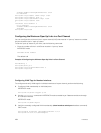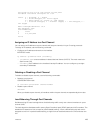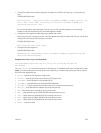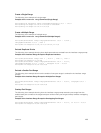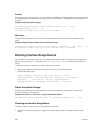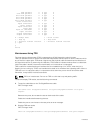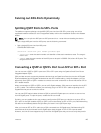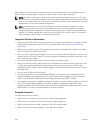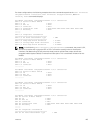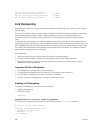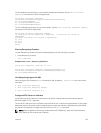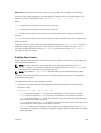
64B packets: 0 0 pps 0
Over 64B packets: 0 0 pps 0
Over 127B packets: 0 0 pps 0
Over 255B packets: 0 0 pps 0
Over 511B packets: 0 0 pps 0
Over 1023B packets: 0 0 pps 0
Error statistics:
Input underruns: 0 0 pps 0
Input giants: 0 0 pps 0
Input throttles: 0 0 pps 0
Input CRC: 0 0 pps 0
Input IP checksum: 0 0 pps 0
Input overrun: 0 0 pps 0
Output underruns: 0 0 pps 0
Output throttles: 0 0 pps 0
m - Change mode c - Clear screen
l - Page up a - Page down
T - Increase refresh interval t - Decrease refresh interval
q - Quit
q
Dell#
Maintenance Using TDR
The time domain reflectometer (TDR) is supported on all Dell Networking switch/routers.
TDR is an assistance tool to resolve link issues that helps detect obvious open or short conditions within
any of the four copper pairs. TDR sends a signal onto the physical cable and examines the reflection of
the signal that returns. By examining the reflection, TDR is able to indicate whether there is a cable fault
(when the cable is broken, becomes unterminated, or if a transceiver is unplugged).
TDR is useful for troubleshooting an interface that is not establishing a link; that is, when the link is
flapping or not coming up. TDR is not intended to be used on an interface that is passing traffic. When a
TDR test is run on a physical cable, it is important to shut down the port on the far end of the cable.
Otherwise, it may lead to incorrect test results.
NOTE: TDR is an intrusive test. Do not run TDR on a link that is up and passing traffic.
To test and display TDR results, use the following commands.
1. To test for cable faults on the TenGigabitEthernet cable.
EXEC Privilege mode
tdr-cable-test tengigabitethernet slot/porttengigabitethernet slot/port/
subport
Between two ports, do not start the test on both ends of the cable.
Enable the interface before starting the test.
Enable the port to run the test or the test prints an error message.
2. Displays TDR test results.
EXEC Privilege mode
show tdr tengigabitethernet slot/porttengigabitethernet slot/port/subport
412
Interfaces



